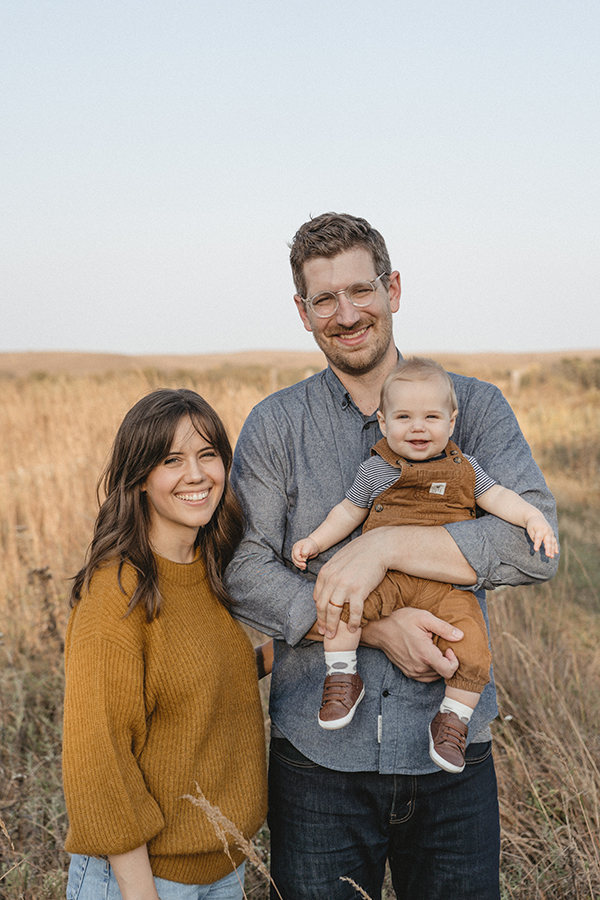The 2022 Field Journal is the fifth volume of the annual publication that Katherine and Derek Hamm have designed for the organization. Read more about the process for creating the Field Journal and what the Hamms enjoy most about the work.

Q: How did you first get involved with Symphony in the Flint Hills and in what capacity?
A: We got connected to Symphony in the Flint Hills through Ton Haak and Ans Zoutenbier who edited the art for the Field Journal for a few years. We were starting to get involved in things with them in Matfield Green and they knew we were graphic designers so there was interest in making the project a local effort. We both grew up in central Kansas and have been involved in art in the Flint Hills through managing The Bank Art Space and helping coordinate the Tallgrass Artist Residency, so it’s a perfect project for us.
Q: Tell us about your work on the Field Journal.
A: We do the design and layout for the Field Journal — figuring out how the articles and artwork fit together and setting the text to make it as easy and enjoyable to read as possible. We work pretty interchangeably depending on who has more time in a given day, often passing the laptop back and forth on the couch to try out different ideas. This year marks the fifth volume that we’ve worked on. Even though we try to keep the series consistent, each year it seems like there are a few unique features and subtle changes to improve things.
Q: Explain the process for how the Field Journal comes together.
A: Starting fairly soon after the previous year’s event, Sandy Carlson works with others at the Symphony in the Flint Hills to determine themes, collect information, and finds writers for appropriate stories, which Matt Regier then uses as inspiration to select the art. We generally get all of the final materials in January and start rounds of back and forth between Sandy, Matt, and Paula Haas, our Field Journal editor. We always try to streamline the process, but there are so many parts and little details that inevitably we end up with ten or more versions. It’s usually finalized around the beginning of March, then the covers are printed at Vahalla Studios in Kansas City, the pages are printed at Sun Graphics in Parsons, and the whole book gets sent to San Antonio for binding.
Q: What do you enjoy most about working on the Field Journal?
A: Design work is always more enjoyable when the content is good and we always appreciate the variety of perspectives represented in the articles and the images — it’s great material to give form to. Often, we know several of the contributors from other connections so it’s fun to work on something that feels like a collection from the broader prairie community. Most of all, we enjoy working with all of the people involved with putting the Field Journal together — everyone wants the final result to be as good as it can be and trusts in our various areas of expertise to help make that happen.
Q: Why is the Field Journal an important component of the organization?
A: The Signature Event is such an amazing spectacle that serves as a great introduction (or yearly reminder) to how magical of a place the prairie is, but it’s a fleeting experience. The Field Journal is a great complement because it provides a way to take that experience and explore it more broadly and deeply over time. We often hear from artists that come to the area for the first time for the residency program that the past volumes are really helpful as they think about how to engage with the Flint Hills — and this is usually before they realize we have anything to do with producing it.
Q: What’s your favorite part of the Signature Event?
A: Katherine plays violin so she has a better sense of what’s going on musically and appreciates the performance. I (Derek) am probably most drawn to the site itself — it’s always impressive to park and see maybe just the tops of a couple tents off in the distance and then slowly see an entire village appear as you approach.